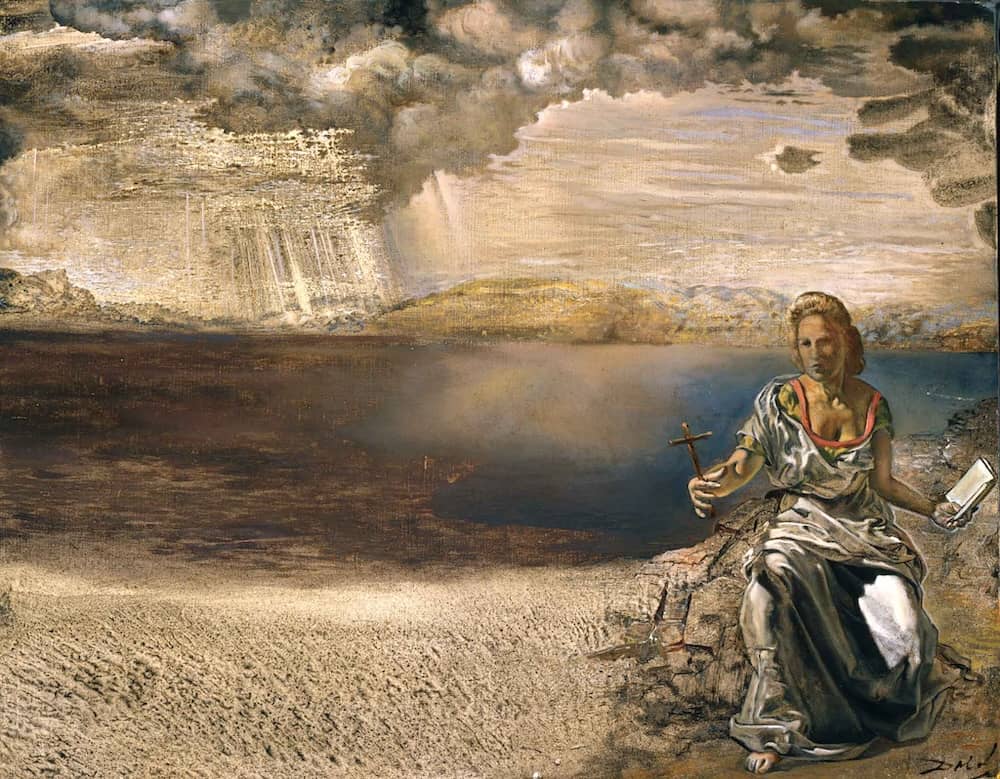Saint Helena of Port Lligat, 1956 by Salvador Dali

Among the symbolic roles Gala filled in Dali's life and work, her function as a spiritual guide assumed special significance for the artist following his return to Europe in 1948. In her incarnation as Madonna, Angel, and Magdalen, Gala is interpreted as the spiritual force who leads Dali back to Christianity. In Saint Helena of Port Lligat, she appears in the guise of the early Christian saint and mother of Constantine the Great, who prevailed upon her son to adopt Christianity as the official religion of the late Roman Empire in 313 C.E . In the year 325 the devout Helena embarked on a trip to the Holy Land to identify the sacred sites of Christianity. Divinely inspired visions led her to the home of Mary Magdalene, to the site of Christ's crucifixion, and to the Holy Sepulcher, where Constantine erected basilicas. Saint Helena is also reputed to have discovered the remains of the "true" cross.
Dali envisions Gala as his own religious "mother" in the guise of Saint Helena. Seated on rocks along the shore of the Bay of Port Lligat, she holds her attribute, the cross, in one hand, and the gospels in the other. The statuesque figure of Gala is modeled on Moses by Michelangelo, an art-historical conceit that Dali increasingly employed. The image reappears in Dali's monumental Ecumenical Council of 1960.
The austere beauty of Port Lligat is a fitting backdrop for this image of unquestioning faith and religious zeal. Dali has fully indulged his penchant for drama, fashioning dark billowy clouds from which the light of inspiration rains down on distant hills. The figure of the lone saint appears like a rock, solidly planted in a landscape that is summarily painted. Dali has employed a range of techniques to achieve the effect of a severe and ascetic environment: grisaille is combined with blotting and finger painting in the foreground and background, and a thick varnish has been applied to the sea.























